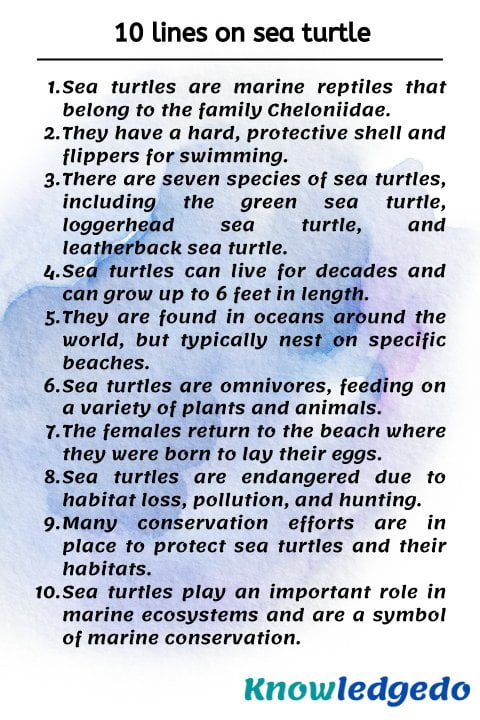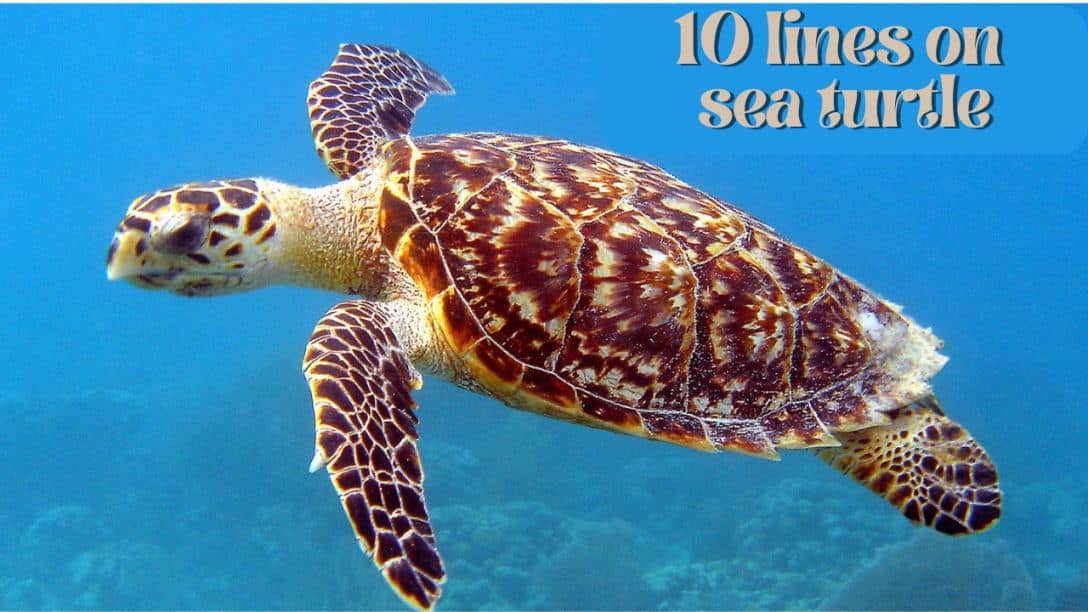Today, we are sharing 10 lines on sea turtle in English This article can help students who are looking for information about 10 lines on sea turtle. This essay is very simple and easy to remember. The level of this essay is moderate so any student can write on this topic.
This article is generally useful for class 1,class 2,class 3,class 4,class 5,class 6,class 7,class 8,class 9,class 10,class 11,class 12
10 lines on sea turtle
1) Sea turtles are marine reptiles that belong to the family Cheloniidae.
2) They have a hard, protective shell and flippers for swimming.
3) There are seven species of sea turtles, including the green sea turtle, loggerhead sea turtle, and leatherback sea turtle.
4) Sea turtles can live for decades and can grow up to 6 feet in length.
5) They are found in oceans around the world but typically nest on specific beaches.
6) Sea turtles are omnivores, feeding on a variety of plants and animals.
7) The females return to the beach where they were born to lay their eggs.
8) Sea turtles are endangered due to habitat loss, pollution, and hunting.
9) Many conservation efforts are in place to protect sea turtles and their habitats.
10) Sea turtles play an important role in marine ecosystems and are a symbol of marine conservation.

5 lines on sea turtle
1) Sea turtles are marine reptiles with hard, protective shells.
2) They have flippers for swimming and can live for decades.
3) Sea turtles are found in oceans around the world and are omnivores.
4) Sea turtles are endangered due to habitat loss, pollution, and hunting.
5) Many conservation efforts are in place to protect sea turtles and their habitats.
FAQ
Answer: There are seven species of sea turtles including the green sea turtle, loggerhead sea turtle, and leatherback sea turtle.
Answer: Sea turtles can live for decades.
Answer: Sea turtles are omnivores, they feed on a variety of plants and animals, such as seagrasses, jellyfish, crustaceans, and molluscs.
Answer: Female sea turtles return to the beach where they were born to lay their eggs.
Answer: The main threats to sea turtle populations are habitat loss, pollution, accidental capture in fishing gear, and hunting. Climate change also poses a significant threat to sea turtle populations by altering the sex ratio of hatchlings and shifting the timing of nesting seasons.
